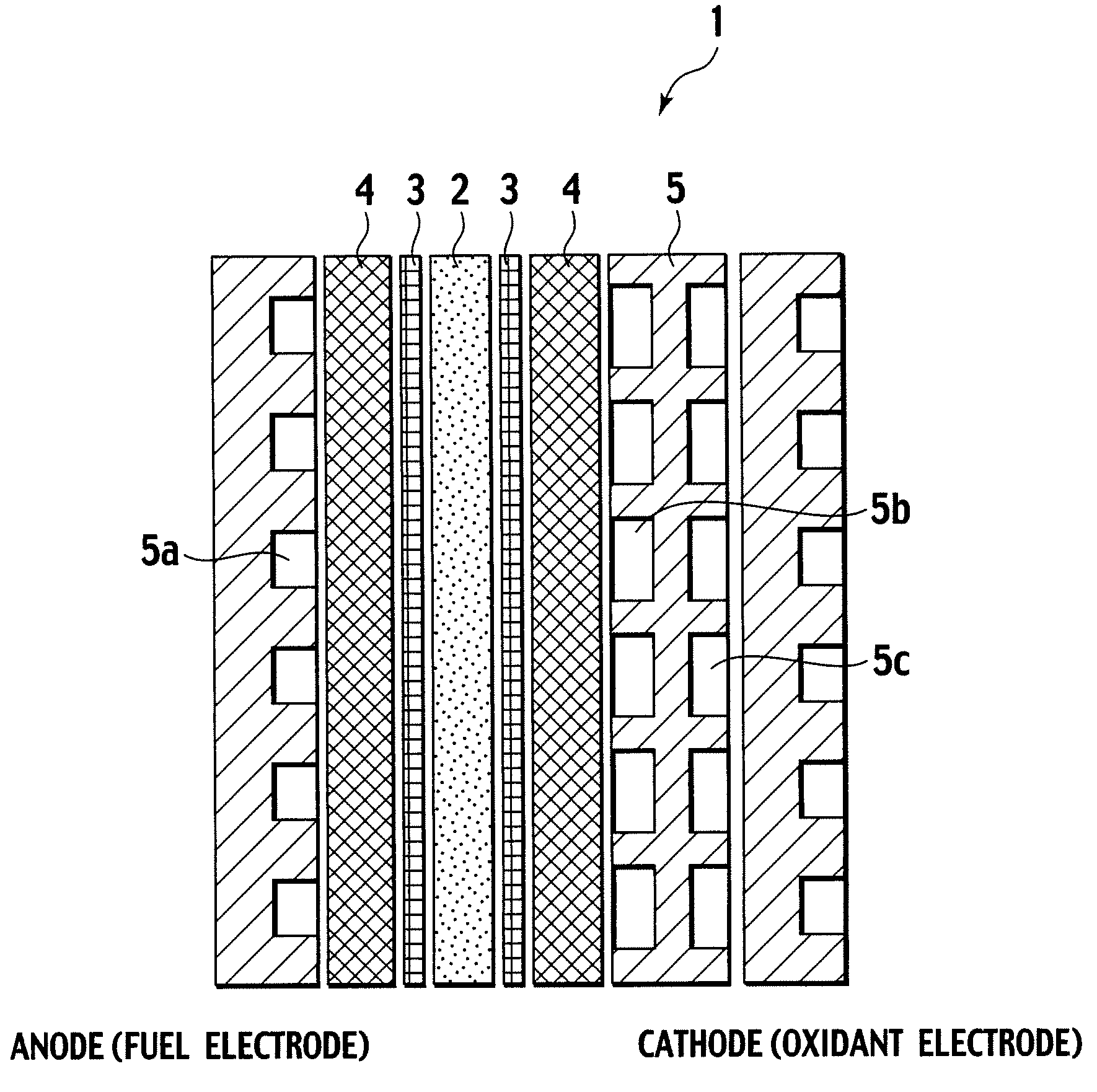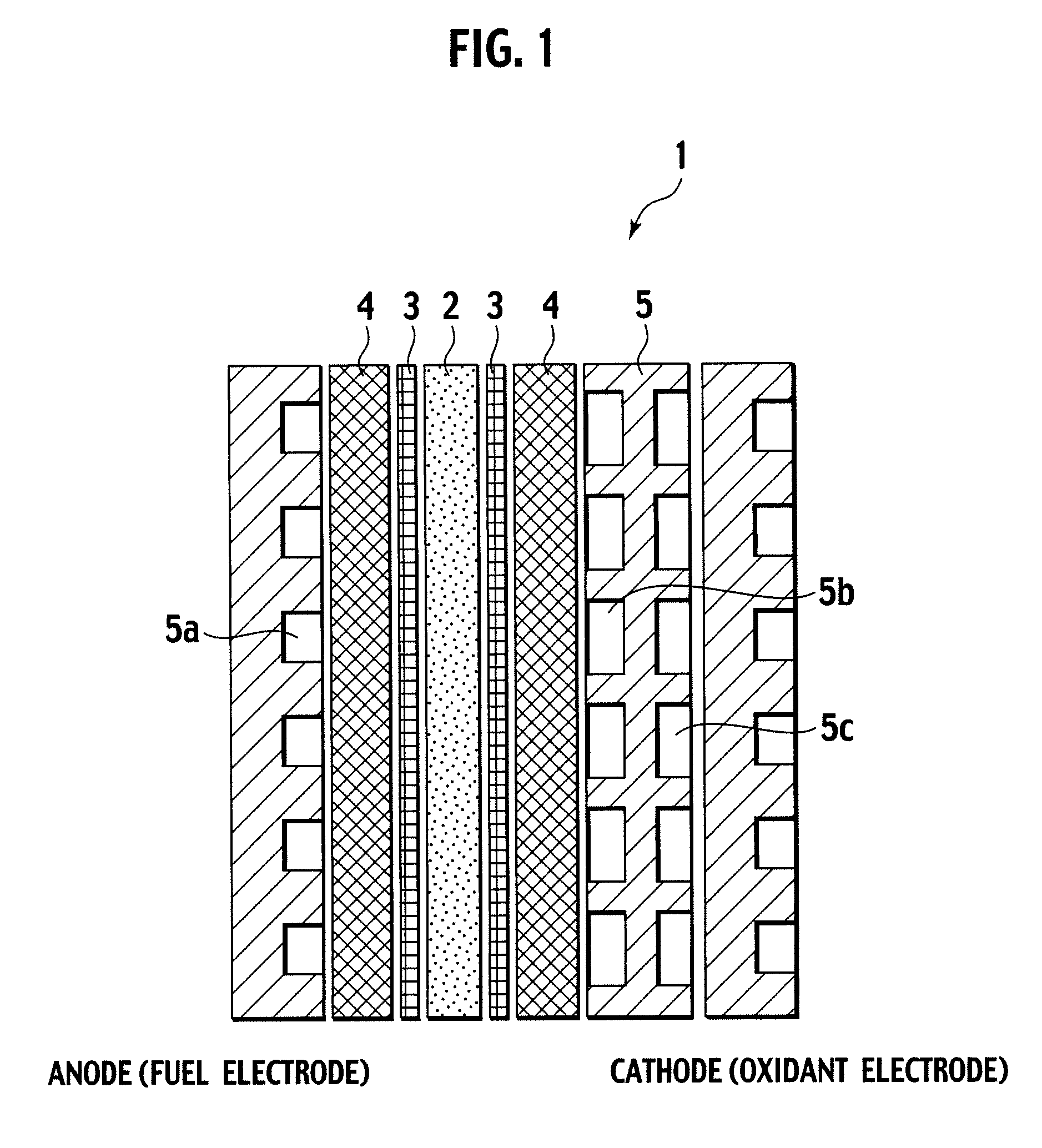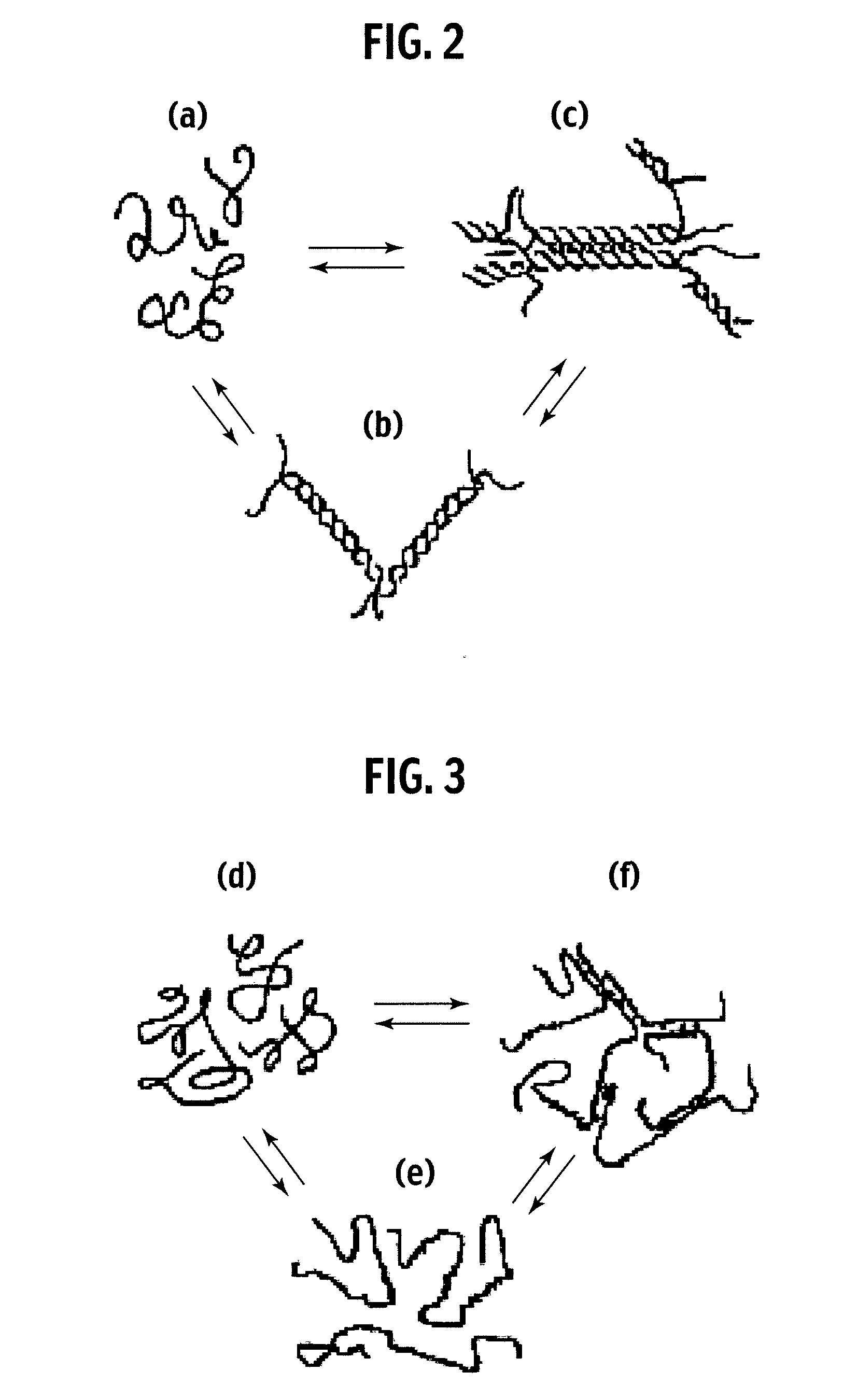Fuel cell system and method of repairing electrolyte membrane thereof
a fuel cell and electrolyte membrane technology, applied in the field of fuel cells, can solve the problems of additional equipment, difficult to detect the gas leakage of each cell stacked, and problems in detection accuracy and detection limitations
- Summary
- Abstract
- Description
- Claims
- Application Information
AI Technical Summary
Benefits of technology
Problems solved by technology
Method used
Image
Examples
example 1
[0105]As the gelatinizer (fiber-like aggregate forming material), cyclo (L-Asp(OR)-L-Phe) shown in Chemical formula 3 was used. As the electrolyte, an ionic liquid (1-ethyl-3-methyl imidazolium tetrafluoroborate: EMImBF4) was used, and an adjustment was performed therefor so that the gelatinizer could be contained therein in a ratio of 1% in mass conversion. Then, a resultant was heated and dissolved, and a sol solution of the ionic liquid was obtained. The obtained sol solution was impregnated into a PTFE porous membrane (Omnipore Membrane made by Millipore Corporation; pore diameter: 1 μm; thickness: 100 μm) in which a surface is subjected to water immersion treatment. Thereafter, the porous membrane was heated at a predetermined temperature, and the ambient pressure was reduced while maintaining a sol state, whereby impregnation treatment of the electrolyte to the porous membrane was performed. Then, at the room temperature, the above-described porous membrane was naturally coole...
example 2
[0109]For the cell used in Example 1, in which the pinhole was provided in a simulation manner, exhaust gas on the cathode electrode side was collected, and gas components were detected therefrom by gas chromatography.
[0110]From the fact that the hydrogen gas that had been hardly detected before forming the pinhole was detected, it was confirmed that it was possible to detect the pinhole by measuring the gas components.
[0111]Next, in a similar way to Example 1, the cell temperature was raised to 180° C., this state was held for one hour, and the work or recovering the electrolyte was performed. Thereafter, the exhaust gas components on the cathode electrode were measured by the gas chromatography one more time, and then it was confirmed that there was no hydrogen gas.
example 3
[0112]For the cell used in Example 1, in which the pinhole was provided in the simulation manner, gas discharged from the exhaust gas line on the cathode electrode side was blown into pure water, and pH in the drained water, which was derived from the components contained in the discharged gas, was measured.
[0113]Some pH variations were observed before forming the pinhole, and meanwhile, after forming the pinhole, the pH value was decreased to a large extent. From this fact, it was confirmed that the pH was varied by forming the pinhole.
[0114]Next, in a similar way to Example 1, the cell temperature was raised to 180° C., this state was held for one hour, and the work or recovering the electrolyte was performed. Thereafter, the exhaust gas on the cathode electrode side was blown into pure water one more time, and pH in the pure water was measured. Then, it was confirmed that the pH exhibited a value equivalent to that before forming the pinhole.
[0115]The entire contents of Japanese ...
PUM
| Property | Measurement | Unit |
|---|---|---|
| Temperature | aaaaa | aaaaa |
| Temperature | aaaaa | aaaaa |
| Temperature | aaaaa | aaaaa |
Abstract
Description
Claims
Application Information
 Login to View More
Login to View More - R&D
- Intellectual Property
- Life Sciences
- Materials
- Tech Scout
- Unparalleled Data Quality
- Higher Quality Content
- 60% Fewer Hallucinations
Browse by: Latest US Patents, China's latest patents, Technical Efficacy Thesaurus, Application Domain, Technology Topic, Popular Technical Reports.
© 2025 PatSnap. All rights reserved.Legal|Privacy policy|Modern Slavery Act Transparency Statement|Sitemap|About US| Contact US: help@patsnap.com



